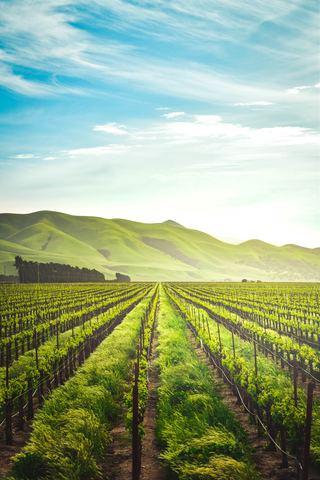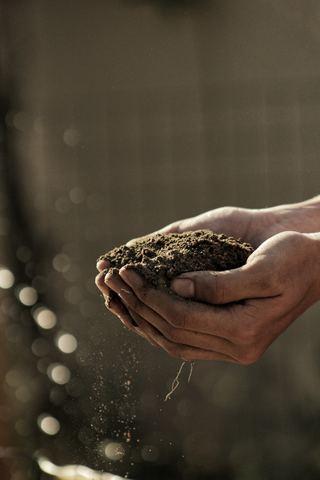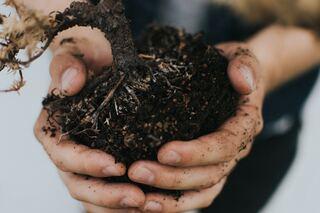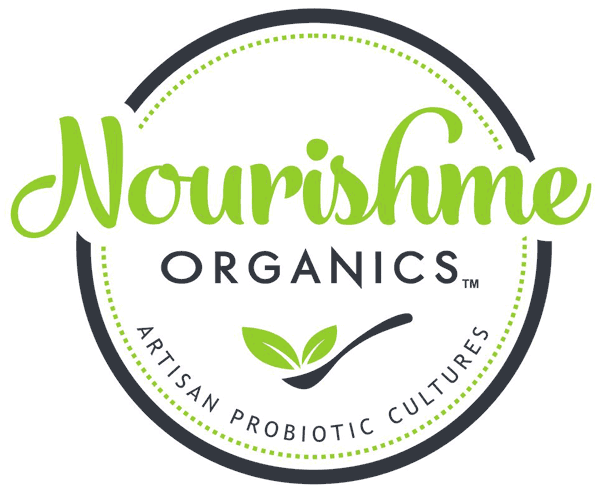The Future Of Farming: Soil Probiotics

I had the pleasure of speaking with Jock Leys. Jock grew up on a farm in Northern Wales. He studied agricultural science in University and he always worked in the cropping side of Agriculture. His passion is the biological space and moving beyond the traditional ways of agriculture. Nowadays we know the harmful side effects of pesticides. The problem is that they help to yield a lot more crops. But what if there was something that could do this naturally? Read on to learn about bacteria and plants, gut bacteria and soil bacteria, mycorrhiza and how it helps your garden, and ways you can improve your garden so you can grow all of your own vegetables without any harmful side effects!

How Did The Use Of Synthetic Fertilizers, Fungicides, and Insecticides Start?
When agriculture became industrialized, it put more pressure on the system we had in place. Once we needed to grow crops intensively year after year, it brought out issues. For Example: If you are growing wheat year after year, the diseases that might get on them and kill your crops become more prevalent. That was the main issue that they needed to address. This is how the early fungicides, insecticides, and fertilizers came about.
When you are cropping year after year you are taking a lot of nutrients out of the soil. These farmers needed something to put those nutrients back in. At that time, the development of these pesticides was good. It let us keep up with the demands and allowed our food to grow without disease. There was a book that came out called “The Silent Spring” One of the main points of this book was about the chemicals back in the day that just filled a void for the problems that they were having such as:
The insects that were wiping out forests in North America
Cotton crops were being wiped out
Some of the worlds biggest crops were having issues
Then all of a sudden chemical were developed that could solve the problem. But then 5-10 years later they started to realize that other issues were going on. Birds and fish were being taken out in mass. Modern agriculture is trying to avoid these issues now and biologicals are extremely safe and get the job done. That is how the pesticides started and how biologicals are paving the way to a more sustainable choice.

Gut Bacteria and Soil Organisms
Any soil that you pick up is going to have millions of different microorganisms in there and they are all reacting in different ways. We are starting to understand some of the main interactions that are going on, we have a long way to go to fully understand. It is a very complex environment. In the very early days, we made that assumption that all the organisms in the soil were detrimental and were causing diseases. But in the last few years with all of the research about the microbiome, we are finding out that the majority of these bacteria are good for us.
My goal is to bring that awareness back. It is important to foster healthy ecosystems whether it's the ecosystem of the gut or the soil. A big part of fixing digestive issues is improving the soil. Because many good bacteria will start with the soil and they will end up in our guts and help our digestive system as we need. It will also help the modern-day diseases that we are currently facing. -Kriben Govender
We know plants have the natural ability to overcome diseases that they encounter whether it’s in:
The soil
The foliage
Insects attacking
Competition from weeds
A lot of this ability is in conjunction with the symbiotic relationship with the microbiome that lives in the soil.
For Example: A plant’s ability to overcome a common disease will be enhanced if it has a stronger relationship with the key bacteria that are living in the soil. We are starting to understand which bacteria are important for that relationship. Once we know this, we will then need to check the soil and see if it's in there. If it isn't then we can introduce it into the system and boost the plant’s ability to naturally overcome the issues that it’s facing as far as being productive. If you get all of this right, you may still need synthetic chemistry occasionally but your reliance will be a lot less.
There is so much interconnectivity between our gut bacteria and soil fungi and yeast. I know when I go out in the garden I am sure I’m getting a good amount of probiotics just by digging in the soil -Kriben Govender

Does The Plant Itself Communicate With The Soil Bacteria?
Yes, it does, by using Mycorrhiza. Mycorrhiza is a type of fungi. It forms a beneficial relationship with the plant roots. Mycorrhiza have been around for millions of years. It has evolved to have a symbiotic relationship with most plant life on earth. The experts suggest that 90% of plant life has a symbiotic relationship with it.
We know that for mycorrhiza to colonise, a plant needs to signal it. It welcomes it into the roots and it sends a signal that says it is ready to colonise. There are many reasons as to why a plant may signal or may not. We need to find ways that we can encourage this to happen. Mycorrhiza is something that responds well to the plant signaling. In some instances, it will improve the plant’s ability to pick up moisture and nutrients in the soil up to 100x. It helps the plant access all of the benefits in the soil that they would otherwise have trouble getting. This benefits the plant in many ways including: 1. It helps to pull in nutrients (immobile nutrients!) such as phosphorus, zinc, and magnesium. These are all immobile in the soil so unless the plant root rubs up against them, they will not pick them up. But once the beneficial fungi is growing in the soil and once it grows to the root it will pull it back in. It acts like an extension of the plant root. 2. It helps to bring more moisture to the plant. Anything that helps the plant pick up moisture will help. That extra extension that mycorrhiza forms at the end of the root will help tremendously. 3. There are 7 key categories of mycorrhiza but there are thousands of different individual species. Depending on that species, they can help form a protective fungal hyphae around the root, reducing the impact of negative fungi. Plants that have good colonisation of mycorrhiza are less likely to be affected by diseases. Mycorrhiza produces a sticky carbon-based substance that they secrete into the soil. It is rich in carbon and if you are testing your soil yearly and you have good colonization, your carbon levels will increase year by year. This is great for healthy soil. The sticky globulin substance helps with soil aggregation. It helps keeps the soil particles together.
Are There Studies Validating Mycorrhizal Fungi?
There has been research done in Oregon and we are also conducting research here in Australia. We are making sure that what has been found overseas works in Australia. Over the last few years we have replicated 30 field trials in different parts of the country. With different tree and plant species. We are starting to do a lot of these studies and have been getting positive results. We do not always get great results, it is a complex situation. We recently received a potato crop result. A potato farm was growing their potatoes traditionally and we had the farmer inoculate with our four-strain mycorrhizal inoculant with his potato seed when he planted. That farmer got a 10% yield increase. In theory, this mycorrhiza should bring in enough nutrients where you will not need fertilizer. In this case that is what happened. This is a win for the farmer and the environment. The mycorrhiza product that we have will pay for itself 100x over.

How Did People Discover The Mycorrhiza?
When agriculture started to become industrial, people talked about something called Long fallow disorder. Fallow is defined as “keeping your ground bare before planting a crop.” They realized that if you introduced fallow into your cropping cycle you might grow fewer crops but you will grow better crops. Fallow is purely keeping your field out of production. If you skip a year then you will have:
-A field soaking in more moisture
-The nutrients will mineralize
-Any trash has a chance to breakdown
-The nutrients become more bioavailable.
They realized this so they introduced these fallow periods until they started doing it for too long. This is what we would call a Long fallow. They were trying to accumulate even more moisture so when you do plant a crop you have enough moisture to grow it through. But once they went beyond 12 months it started to have reverse effects and they didn't know why. What had happened was they were depleting the mycorrhiza. This needs a live host in the soil to survive. You can have weeds but in Australia, more farmers will not tolerate weeds so there was absolutely nothing for this mycorrhiza to feed on.
They would then try to plant a crop in that area and it was an unhealthy crop. They tried to put a lot of fertilizer on it but the plant couldn't access it without the mycorrhiza helping. The scientists in the 1930s started to research why this was the case and they identified mycorrhiza as the reason why nothing was growing.
Are There Any Limitations on the use of Mycorrhizal Fungi?
90% of all plant species form a relationship with mycorrhiza in some way. Some are very dependent and without it, the plant will not thrive. Some of these include:
-Tomatoes
-Cotton
-Corn
Others with less strong relationships:
-Wheat
-Barely
Some of the other 10% of plants that don't need mycorrhizae are:
-Turnips
-Canola
-Cabbages
-Lupins
These are examples but most plants do thrive when they have a relationship with mycorrhiza. There are limitations to everything but they are far more beneficial than limiting.

Where Do You See The Production Of Mycorrhiza Going In The Future?
It has taken a long time to fully understand the species and we are still learning how important it is to some crops vs other crops. Some of the research that has happened within the last 10 years has been more important than any that has come before it. It has been something that has taken a while to pick up strength.
If we go back to the 1950s when synthetic fertilizers were introduced people were getting 50% yield gains by using super fertilizers. This overshadowed everything else. Now we understand everything and we have squeezed all the productivity gains out of most products. We are now starting to fine-tune, and I believe this fine-tuning will come from biologicals.
I hope that modern agriculture is keeping in mind the consumers desire to want more natural products. Ones that are sustainable, good for the planet, and something that will protect the planet moving forward. Instead of ones that are produced with chemicals. -Kriben Govender
The environmental benefits are key. In areas where sugarcane is grown, there has been a lot of focus on the leaching of nitrogen fertilizers going into the great barrier reef. They want to do anything they can to reduce the synthetic fertilizers on it. Some of the mycorrhiza/sugarcane studies have been positive. If they can eliminate these fertilizers, that will take the pressure off of the reef! The future is looking bright for mycorrhiza...
Are There Any Other Emerging Products In The Biological Space?
Many of the products are bacteria. There are just as many beneficial bacteria as there are fungi. But there are also a lot of negative ones as well. For every detrimental bacteria or fungus there is a beneficial one…..
+Streptomyces has evolved over the years to have beneficial relationships with plants.
-Nematodes are microscopic worms in the soil and most of them have negative effects. They are taking nutrients from the soil which is robbing the productivity of the plants.
BUT there are certain strains of bacteria that we have found that suppress them (and soil diseases!) and reduce the effects on the plants. When looking at good bacteria, it needs to colonise and to build up abundance. It needs to get to a certain level and get to the roots. It may not kill the disease but it will attack it and push it away from the roots and allow the plant to grow away from the disease.
It is like probiotics for the soil. We know that it also has foliage applications too. You can spray it on the plant if they are getting something like powdery mildew or leaf diseases. This will help suppress these diseases. These biologicals are better for the environment.

5 Tips For Novice Gardeners
1. Our products are available HERE. Start to understand that you can increase the natural levels of these good bacteria and fungi without inoculating them as well. BUT inoculation is easy, you just have to put it on the seed when you are planting or water it into the soil. If you understand that mycorrhiza is more likely to colonize on certain species you can grow those in your veggie garden and you can build the levels up naturally. Keep in mind that if you keep that area bare for too long you are going to deplete the levels of the mycorrhiza. Start to get the good organisms working in your favor!
2. Make sure to keep organic matter levels high. Some plants live on live bacteria or fungi and some live off of dead organic matter. If you keep as much dead plant tissue as possible and reincorporate it into the soil it will help plants to thrive. Try to keep plants in your garden as much as possible. This way the good bacteria and fungi will have somewhere to live. You can also add mulch and leaves into your garden as well. That will build the organic matter.
3. You can also get your soil tested. We look at soil test parameters and we measure organic carbon. You can order your own microbiome soil test HERE. This will really help you to see if you are on the right track. For the novice gardener, try to smell the organic matter in the soil, see bigger organisms like worms being active, then you are in a good place but if you want more accurate results you can get it tested.
4. Research mycorrhiza and see which plants they help. Look at a table and see what species to plant in your vegetable garden to help build the levels up.
5. Start with things such as composting your vegetable scraps, this will help your garden and put less into landfills. Starting a compost bin, start a worm farm, everyone can help make the planet a better place.
Bacteria and fungi are the future of agriculture. There are many natural alternatives that we can implement for ourselves and for our environment. Start planting in your garden more frequently, remember that soil bacteria becomes gut bacteria, build up your soils supply of mycorrhizal fungi, and get your soil tested so you know that your plants are going to thrive. Share this with your fellow gardener friend, happy gardening!












